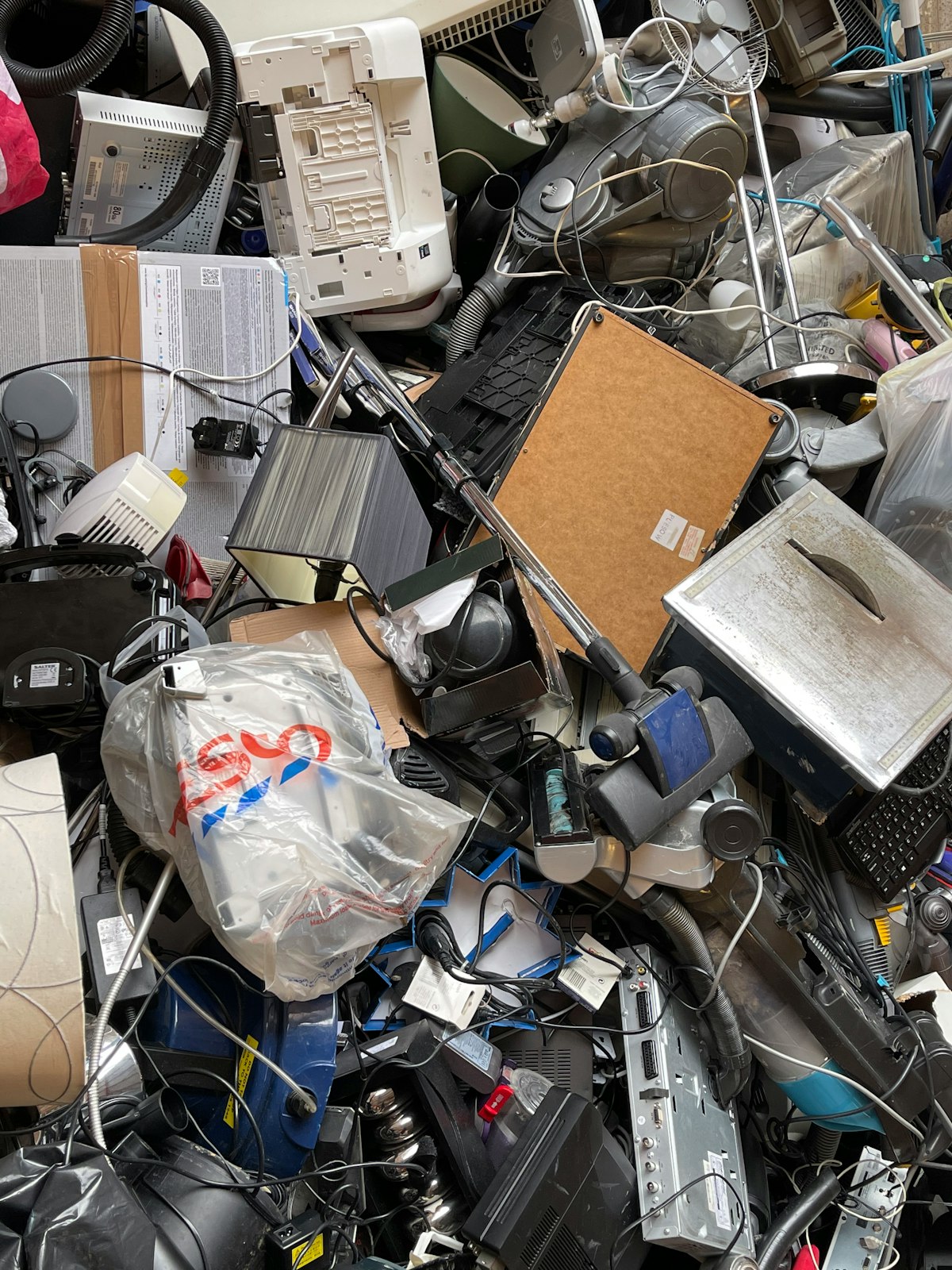Mexico is among the leaders in e-waste output in the world
The country would earn about $1.2 billion dollars a year by recycling its electronic waste, although this is not very good news. Here are the details why.

Mexico has the economic potential to collect close to 1.2 billion dollars annually by "recycling" the 1.2 million tons of electronic waste it generates each year, according to estimates by the Secretariat of Environment and Natural Resources (Semarnat). Although this figure seems positive, due to the large number of resources mentioned, the negative side is the enormous generation of electronic waste that the country is producing, and that comes from computers, cell phones, screens, refrigerators, tablets, and other devices that people throw away.
Mexico is the third nation in the American continent that generates the most tons of electronic waste per year, with 1.2 million tons. The first place is occupied by the United States, with almost seven million tons per year, while Brazil is in second place, with 2.1 million tons. The reasons why there is so much of this type of waste are varied, from people who discard or replace their components because they consider them obsolete, to companies that do not have an adequate waste management protocol.
All this waste ends up, for the most part, in large landfills or waste dumps, although this is where the real gold mine is. The other side of the coin is that all these items have a "limited" life span of almost five years, and in many cases, they are beyond repair in case of failure.
In Mexico, there are three states with the highest electronic waste contamination: Baja California, Jalisco, and Mexico City. The three states concentrate about 23 percent of all electronic waste generated in the country, as efforts to separate and recycle items such as televisions, personal and desktop computers, sound players and recorders, cellular and fixed telephones. These products are those that are mostly in their last stage of life and are more likely to be discarded by people and in which gold, silver, platinum, aluminum, and copper, among other metals, can be found.
In 2020, UNDP, Semarnat, and the government of Baja California signed a letter of intent to develop activities in the entity and reduce or eliminate polychlorinated biphenyls from currents, a substance that is released from transformers, capacitors, and other electronic equipment, and to promote actions for environmentally sound management of electronic waste and pesticides. This is in order to avoid contaminating gases to the environment and to protect the health of the population, since if these liquids are mishandled, they can spread to other areas of the country.
Of all the electronic waste generated nationwide, Mexico City accounts for around 11 percent, while Jalisco and Baja California account for eight and five percent, respectively.
To take advantage of the economic potential of 1.2 billion dollars a year, it is not enough to focus on recycling efforts: the companies that generate this waste must also do their part to achieve this goal. Perhaps the most important part would be the extended producer responsibility scheme, which is not currently in place in the country and is very important to better address these wastes.
The General Law for the Prevention and Integral Management of Waste and its Semarnat Regulations state that the penalties for not properly separating waste or contaminating public spaces with a waste range from administrative arrests for 36 hours to the temporary or definitive, total or partial closure of the polluting company. Fines also include the suspension or revocation of the corresponding concessions, licenses, permits, or authorizations for the companies, as well as the remediation of contaminated sites.
Among the activities for which companies may also be fined are the collection, storage, or transportation of hazardous waste without proper authorization; dumping, abandonment, or final disposal of hazardous waste in unauthorized sites; and failure to comply with environmental protection measures in the transportation of hazardous waste. There are penalties of up to 200 days of minimum wage. Sometimes it is consumer waste, which is equipment that has completed its life cycle and people discard it, but there must still be a plan for its proper management and disposal.
Due to the pandemic and the accelerated use of electronic devices, the generation of this waste in the country will grow by 17 percent between 2020 and 2025, where LCD screens and televisions will account for an average of 66 percent of all waste generated. Other items that will be added to this waste will be personal computers and cell phones. Data from the Global E-Waste Observatory point out that in 2020 the consumption of electrical and electronic devices in the world increased by 2.5 million tons, compared to the previous year.
In 2019 alone, according to the report, the world generated 53.6 million tons of this waste, but only 17.4 percent was "officially" collected and recycled. When compared to 2014 records, there is an increase of 9.2 million tons, indicating that recycling activities are not keeping pace with the global growth of e-waste, the report expresses. Distance work and online education are on the rise. In Mexico, there has been a 40 percent growth in purchases of some electronic devices such as smartphones, tablets, or computers during the first months of 2021.
The useful life of these devices is increasingly shorter due to their programmed obsolescence, a factor related to the fact that companies design their electronic products with a shorter life span or their software updates make them unusable in a matter of months. This problem should be a priority or of national interest because if it is not addressed in the short term, there is a risk of affecting future generations of society and the environment.




